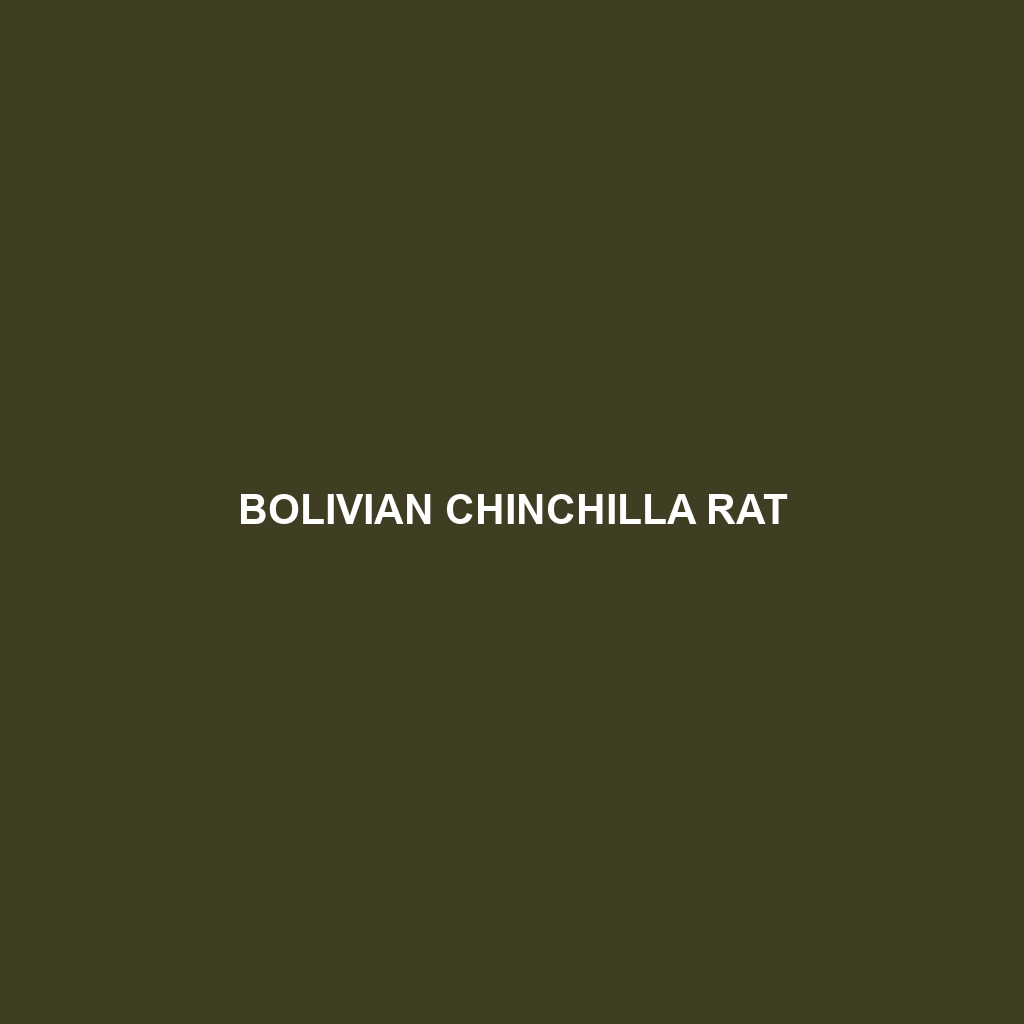Common Name: Bolivian Chinchilla Rat
Scientific Name: Abrocoma boliviensis
Habitat:
The Bolivian Chinchilla Rat primarily resides in the high-altitude regions of the Andes Mountains in Bolivia. This species prefers rocky, mountainous terrains, often found in dry, shrubland environments at elevations ranging from 3,000 to 4,500 meters. These areas provide suitable shelters in the crevices and rock formations, vital for their survival.
Physical Characteristics:
The Bolivian Chinchilla Rat is a medium-sized rodent, typically averaging around 25-30 cm in length, including a bushy tail that enhances its balance. Its fur is dense and soft, showcasing a grayish-brown color, which helps in camouflage against rocky backdrops. Distinctive features include large, rounded ears and sharp incisors that are well-adapted for gnawing on tough vegetation. Their strong hind legs are designed for jumping and climbing in their rocky habitat.
Behavior:
This species is mostly nocturnal, exhibiting high levels of activity during the night. Bolivian Chinchilla Rats are social animals, often living in colonies. They communicate with each other through a series of whistles and chirps. Their agile movements enable them to navigate rocky landscapes efficiently, allowing them to escape from potential predators swiftly. During the day, they actively forage for food and are known to build intricate burrows for nesting and protection.
Diet:
The Bolivian Chinchilla Rat is herbivorous, primarily feeding on a variety of plant materials. Their diet consists of grasses, seeds, roots, and occasional bark of shrubs. This rodent’s foraging habits are crucial for their survival in the harsh mountain environment as they adapt to the seasonal availability of food sources, ensuring their sustenance despite the fluctuating climate.
Reproduction:
Breeding for the Bolivian Chinchilla Rat typically occurs during the warmer months, with females giving birth to litters of 2-4 young after a gestation period of approximately 88-120 days. The offspring are born hairless and blind, relying on the mother for warmth and nourishment. Parental care is significant, and the young are weaned after about 6 weeks, becoming independent shortly thereafter.
Conservation Status:
The Bolivian Chinchilla Rat is currently categorized as ‘Vulnerable’ due to habitat loss and degradation caused by agricultural expansion and mining activities. Efforts to protect their natural habitat are essential for ensuring the survival of this unique species.
Interesting Facts:
Despite their resemblance to chinchillas, the Bolivian Chinchilla Rat is a distinct species known for its adaptability to extreme environments. These rodents have a remarkable ability to withstand harsh climate changes, showcasing their resilience. Moreover, they play an important role in seed dispersal within their habitat, contributing to ecological balance.
Role in Ecosystem:
The Bolivian Chinchilla Rat occupies a vital niche in its ecosystem, serving as both prey for larger predators and as a herbivore that influences vegetation dynamics. Their foraging behavior contributes to the spread of plant species, which is essential for maintaining the health of the mountainous ecosystem. Additionally, they help aerate the soil through their burrowing activities, promoting biodiversity.
